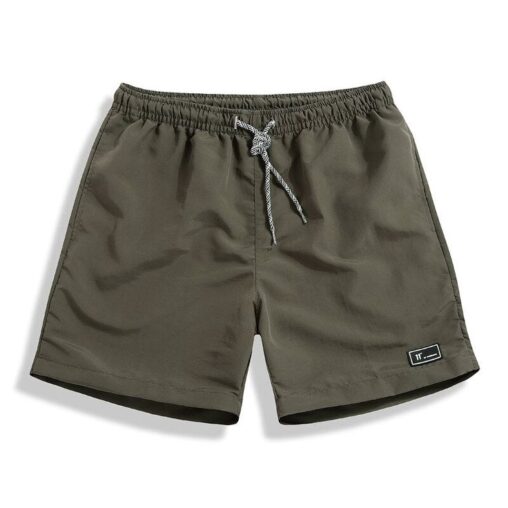
When it comes to swimwear, longevity isn’t a concept that often surfaces. The moment you make a purchase, there’s a tacit understanding that your swimsuit has an expiration date. This date approaches more swiftly if you’re an avid swimmer or sun-soaker.
All garments undergo wear and tear, but swimwear, in particular, contends with a host of adversities. From exposure to chlorine, sunscreen, and detergents to constant friction against abrasive surfaces and the damaging embrace of UV rays during outdoor swims, the deck is stacked against your swimsuit’s durability.
With such risk factors in play, it’s no surprise that swimsuits have a relatively short lifespan. The longevity of your swimwear is further influenced by factors such as the material’s quality, your swimming frequency, the level of care you invest in maintenance, and more.
In this comprehensive guide, we’ll unveil the secrets to extending the life of your swimsuit, ensuring it accompanies you on numerous aquatic adventures.

What Determines Your Swimsuit’s Lifespan?
Your swimsuit’s durability hinges on an array of influential factors, some within your control, and others, alas, unavoidable. Understanding these variables is pivotal for making informed choices that prolong your swimwear’s life.
1. Chlorine: The Unwelcome Guest
Chlorine, a necessary evil in pool sanitation, is the chief antagonist in the story of your swimsuit’s lifespan. It serves a vital purpose, annihilating harmful bacteria and ensuring pool-goers remain healthy. However, it also exacts a toll on your swimwear.
Chlorine’s corrosive nature swiftly deteriorates fabrics and elastics. To mitigate its effects, make use of poolside showers to rinse both yourself and your swimsuit after swimming.
2. Sunlight: The Silent Foe
Prolonged exposure to sunlight can damage virtually anything, and swimwear is no exception. While your swimsuit may boast UPF (UV Protection Factor) ratings, signifying UV resistance, it’s not invulnerable.
Over time, sun-exposed swimwear will fade and weaken. Therefore, avoid drying your swimsuit in direct sunlight.
3. Lotions and Oils: The Staining Culprits
In the quest for sun-kissed skin, sunscreen and tanning oils are essential companions. Regrettably, these products contain chemicals that can stain and erode your swimsuit. The challenge lies in avoiding these inevitable culprits.
4. Abrasive Surfaces: The Stealthy Threats
Mind where you sit! Be it on the beach or poolside, placing a towel beneath you is a prudent practice. Sand and debris lurking in the environment can wear down or even tear your delicate swimwear. Exercise caution when perching on logs, boulders, concrete, or any abrasive surface.

5. Detergents: The Double-Edged Sword
While you aim to wash off chlorine post-swim, you might paradoxically expose your swimsuit to an equally damaging chemical based on your detergent choice. Many detergents contain bleach, too harsh for your swimwear.
Opt for mild detergents designed for swimsuits, or use alternatives like distilled white vinegar, baking soda, or dish soap for safe cleaning.
6. Mold: The Health Hazard
A damp swimsuit forgotten in your bag overnight is a breeding ground for mold, often revealed as black dots or white powdery mildew. Mold not only deteriorates your swimsuit but poses health risks, from skin rashes to respiratory problems.
Quick and thorough washing is essential to prevent mold from becoming a permanent part of the fabric.
7. Swimming Frequency: The Accelerated Wear and Tear
The more you swim, the sooner your swimsuit faces all the perils mentioned above. Even with diligent maintenance, higher swimming frequency accelerates wear and tear.
Reducing swim sessions might not be an acceptable solution. Instead, consider investing in a high-quality, long-lasting swimsuit that withstands the test of time.
8. Swimsuit Material: The X-Factor
Most swimsuits feature Lycra or nylon, which offer versatility and comfort but tend to have shorter lifespans. If you yearn for enduring swimwear, seek chlorine-resistant swimsuits, typically crafted from 100% polyester.
Polyester swimsuits have earned a reputation for longevity, with some swimmers enjoying daily use for years.
9. Washing Machine and Dryer: The Risks
Your beloved swimsuit, like any cherished garment, requires gentle care. Follow the washing instructions on the label, which usually advise cold water and hand washing. If machine washing is your preference, use cold water and a gentle cycle.
Protect your swimwear by placing it in a mesh wash bag and avoid mixing it with clothes containing zippers and buttons that can cause abrasion. Sunlight and heat from dryers accelerate wear, so opt for drip-drying in a well-ventilated area away from direct sunlight.
Conclusion
Swimsuits, from their purchase to retirement, span from a few weeks to several years. The material, care, exposure, and maintenance determine this span.
By embracing an awareness of the factors that impact your swimsuit, you can adopt strategies that ensure it endures for seasons, not mere summers. Your swimwear’s longevity is within your grasp; all that’s left is to dive in and extend the lifespan of your beloved swimsuit.







